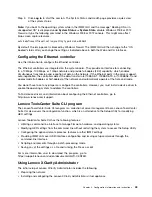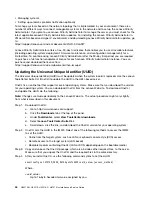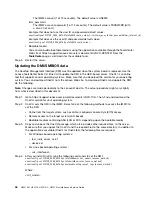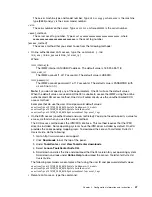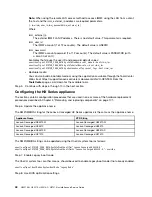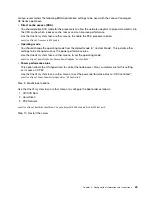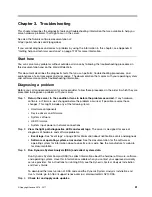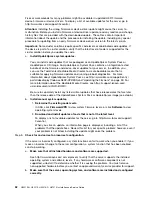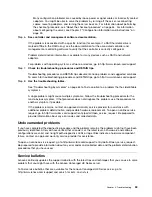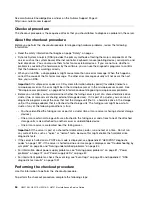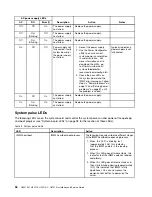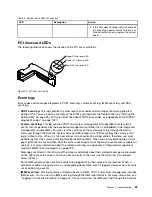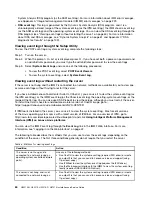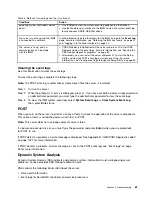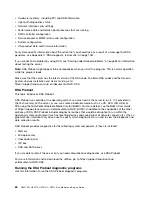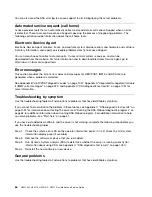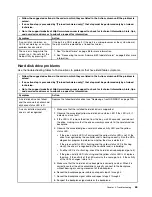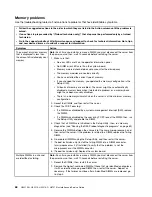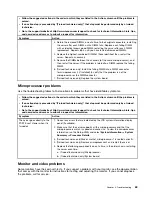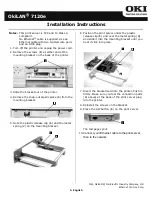
See also Nutanix Knowledge Base articles on the Nutanix Support Page at:
http://www.nutanix.com/support
Checkout procedure
The checkout procedure is the sequence of tasks that you should follow to diagnose a problem in the server.
About the checkout procedure
Before you perform the checkout procedure for diagnosing hardware problems, review the following
information.
• Read the safety information that begins on page “Safety” on page v.
• Dynamic System Analysis (DSA) provides the primary methods of testing the major components of the
server, such as the system board, Ethernet controller, keyboard, mouse (pointing device), serial ports, and
hard disk drives. You can also use them to test some external devices. If you are not sure whether a
problem is caused by the hardware or by the software, you can use the diagnostic programs to confirm
that the hardware is working correctly.
• When you run DSA, a single problem might cause more than one error message. When this happens,
correct the cause of the first error message. The other error messages usually will not occur the next
time you run DSA.
Important:
If multiple error codes or LCD system information display panel (if available) indicate a
microprocessor error, the error might be in the microprocessor or in the microprocessor socket. See
“Microprocessor problems” on page 69 for information about diagnosing microprocessor problems.
• Before you run DSA, you must determine whether the failing server is part of a shared hard disk drive
cluster (two or more servers sharing external storage devices). If it is part of a cluster, you can run all
diagnostic programs except the ones that test the storage unit (that is, a hard disk drive in the storage
unit) or the storage adapter that is attached to the storage unit. The failing server might be part of a
cluster if any of the following conditions is true:
– You have identified the failing server as part of a cluster (two or more servers sharing external storage
devices).
– One or more external storage units are attached to the failing server and at least one of the attached
storage units is also attached to another server or unidentifiable device.
– One or more servers are located near the failing server.
Important:
If the server is part of a shared hard disk drive cluster, run one test at a time. Do not run
any suite of tests, such as “quick” or “normal” tests, because this might enable the hard disk drive
diagnostic tests.
• If the server is halted and a POST error code is displayed, see Appendix B “UEFI/POST diagnostic
codes” on page 1027. If the server is halted and no error message is displayed, see “Troubleshooting by
symptom” on page 64 and “Solving undetermined problems” on page 84.
• For information about power-supply problems, see “Solving power problems” on page 81, “Power
problems” on page 72, and “Power-supply LEDs” on page 57.
• For intermittent problems, check the event log; see “Event logs” on page 59 and Appendix C “DSA
diagnostic test results” on page 1051.
Performing the checkout procedure
Use this information to perform the checkout procedure.
To perform the checkout procedure, complete the following steps:
54
HX3510-G, HX5510, HX5510-C, HX7510 Installation and Service Guide
Summary of Contents for HX3510-G
Page 1: ...HX3510 G HX5510 HX5510 C HX7510 Installation and Service Guide Machine Type 8695 ...
Page 6: ...iv HX3510 G HX5510 HX5510 C HX7510 Installation and Service Guide ...
Page 62: ...50 HX3510 G HX5510 HX5510 C HX7510 Installation and Service Guide ...
Page 102: ...90 HX3510 G HX5510 HX5510 C HX7510 Installation and Service Guide ...
Page 112: ...100 HX3510 G HX5510 HX5510 C HX7510 Installation and Service Guide ...
Page 1222: ...1210 HX3510 G HX5510 HX5510 C HX7510 Installation and Service Guide ...
Page 1238: ...1226 HX3510 G HX5510 HX5510 C HX7510 Installation and Service Guide ...
Page 1239: ......
Page 1240: ......




